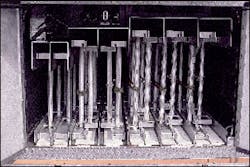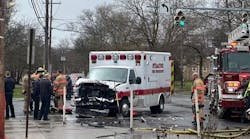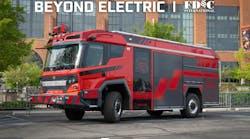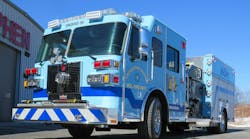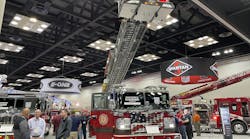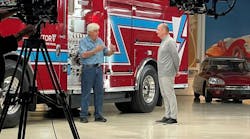In the May installment in the "Apparatus Architect" series we discussed various types of fire apparatus specifications. Each type of specification offers benefits that may not be present in another form. One challenge for the apparatus committee is to properly identify which style of specification will provide the greatest benefit to the department, providing them with the apparatus that is designed and manufactured to meet their needs.
Up to this point in the process, things should be moving along smoothly, with committee members in general agreement as to the overall mission, design and features of the proposed new apparatus. If the committee is not in agreement at this point, stop and re-evaluate the whole process. If you do not have an apparatus architect yet, now is the time to bring one on board.
It has been our experience that some committees do not stop to re-evaluate their positions nor do they employ the services of an apparatus architect. Rather, the members move on without vision or focus. This is where the apparatus architect can keep the committee on track and assist in the development of technical specifications. Where specific manufacturers component makes and models have been referenced in the specification, this provides a standard by which the bidders' proposals can be measured.
A problem arises when a bidder chooses not to offer a specified component or design, but offers an alternative in the proposal. This may be considered a "clarification" or "exception" to the proposal and how the committee interprets this alternative may have a large impact on the analysis of the bidder's proposal.
Let's suppose, for example, that after the bid opening and while reviewing the bid proposals, the committee discovers that the apparent low bidder has taken five "clarifications" to the published specifications, the bidder in the middle has noted seven "exceptions" to the specifications, and the highest bidder has not made any comments and appears to be in full compliance with all aspects of the requirements. What does the committee do now? This is the position that many departments find themselves in - what had been a logical process now is in chaos.
One of the most important parts of the specifications is the "requirements of bidders" or "boilerplate" section of the document. In this area may be described the general terms and conditions of the bidding process for the municipality, contract terms, inspection and testing requirements, delivery and training period, warranty provisions, and other specific details regarding the rights and responsibilities of the manufacturer and the fire department. It may be advisable to develop a short list of terms with definitions applied to them from the department's perspective. This provides all prospective bidders with the necessary information each needs to provide a qualified response to the department's specifications.
In this area of the document it is appropriate for the department to clearly define what constitutes an exception or clarification to the published specification. One definition for an exception could be: "An exception is any deviation to what the bidder is proposing, with respect to dimension, size or capacity, make, model or manufacturer of the specified components. All exceptions shall be listed on a separate page titled 'Exceptions to the Specifications' and shall be numbered in accordance with the fire department's specifications noting the page, section and paragraph number of each item. Failure to list and define the bidders exceptions shall be grounds for rejection of the proposal."
Simply put, an exception is a deviation from the technical specification in which the bidder cannot or will not supply precisely what has been specified.
A definition for a clarification could include the following: "A clarification is an improved or more definitive explanation of what the bidder is proposing to supply to meet the requirements of the published specification. A proposal that offers clarifications for excluded items that were required in the specifications may be immediately rejected as being informal and not in compliance with the requirements of the fire department."
Using this language puts all bidders on an even playing field and reduces the opportunity for manufacturers or sales personnel to develop proposals that do not meet the intent of the specifications. Spelling out the rules of engagement will simplify and streamline the bid-evaluation process and reduce or eliminate ambiguities that frequently cloud the bidding process.
When evaluating a bidder's proposal, nothing is more frustrating for an apparatus committee than noting that the "bid complies" column in the specifications has been checked, only to find in the proposal a completely different make, model or design has been bid in lieu of what was requested. When this occurs, the apparatus committee needs to develop a strategy to properly evaluate the various proposals.
The committee should allow sufficient time to review each bidder's proposal. Depending on the public bidding laws and regulations in the jurisdiction, the bids generally must remain valid for 30 to 60 days. With all of the other activities that may be going on in a department the bid-review process may take a back seat to other higher priority projects; however, this is one of the most important steps in the entire process and should not be overlooked or downplayed. Whether the committee received two proposals or eight, each one should be reviewed and graded on its merits with an unbiased view of exactly what it being offered to the department.
As stated in previous articles, the committee's recommendation is something the department will have to live with for at least 10 to 15 years. A hasty or imprudent decision will have a long-lasting impact.
If the timing of the bid occurs toward the end of the calendar year, the committee must be prepared to work under time constraints as it faces a potential price increase. Several years ago, a fire department planned to acquire several new pumpers that were to be equipped with air conditioning, Class A foam systems and an assortment of new hand tools. The bid price for each apparatus was $235,000, which was about $10,000 more than what had been appropriated. The pumpers were re-bid without these components; this process took another five months. When the new bids were opened, the price had increased to $244,000, even though the air conditioning, foam system and hand tools had been removed from the specifications.
Many manufacturers increase prices during the fourth quarter of the year. The old saying "time is money" certainly fits here. When planning the timing of bids, the committee must be prudent, not careless.
In preparation for the post-bid activities the apparatus committee should prepare several documents that will assist members in analyzing the different proposals. A spreadsheet should be developed listing in the left-hand column the major components, features and critical dimensions of the apparatus. Across the top of the page each of the bidders is listed, with room beneath each heading to fill in exactly what the bidder has proposed. While it may seem like a simple task to perform this analysis with two bidders, it will be time consuming, but very worthwhile when there are four to six bidders. The spreadsheet assists in keeping the major items and components in perspective and in this way, cross comparisons among the different bidders can be easily recognized.
Depending on the complexity of the apparatus and the detail in each bidder's proposal, it can take from two to four hours for each proposal to be reviewed with the various key items noted on the spreadsheet. This procedure is the most time consuming, but also the most important. How much time and effort spent here will directly impact the final product and the cost.
Another analysis procedure is to rank in order of importance some design aspects of the apparatus. For example, if the overall length and hosebed height from the ground are important factors, then these features would be ranked higher than interior color and brand of seats inside of the cab. A minimum of 20 areas could be identified with numbers assigned based on the degree of compliance with the published specification. The proposal with the highest number is the one that most closely meets the fire department requirements, at least is based on the items identified as being of greater importance to the apparatus committee.
While it is always difficult to not interject personnel bias into the review process, the goal is to be as objective as possible and deal with facts and what has been returned in each bidder's proposal. The job of the apparatus committee is to qualify and review each bidder's proposal to see exactly what the manufacturer is offering and how best to meet the needs of the department, as reflected in the specifications. This review process, together with the information that was obtained during the research phase, will assist the committee in determining which manufacturer the department will choose to build its next piece of apparatus.
The next installment in this series will discuss the facets of conducting in-progress inspections of a new unit at the manufacturer's facility.
Tom Shand, a Firehouse